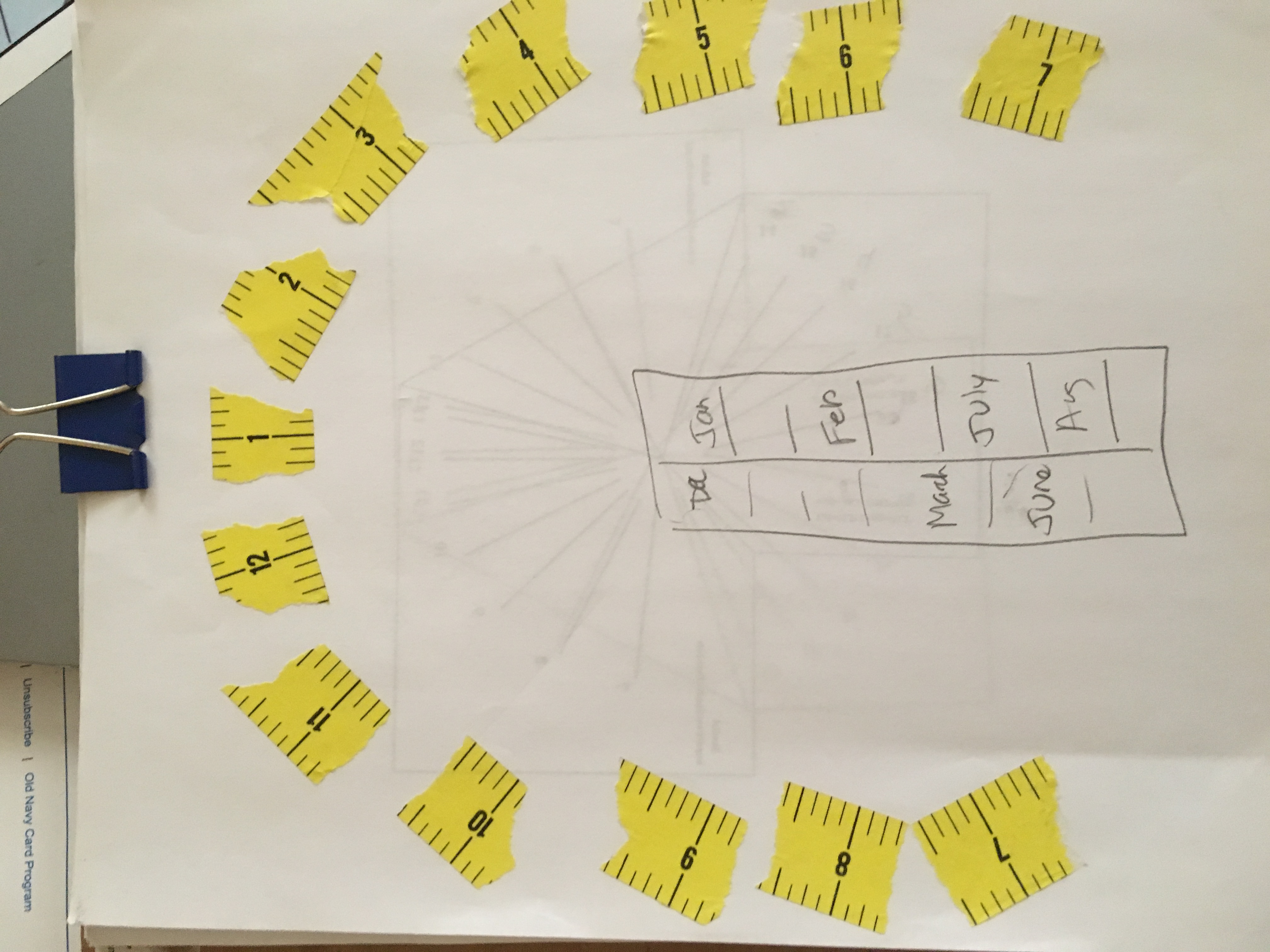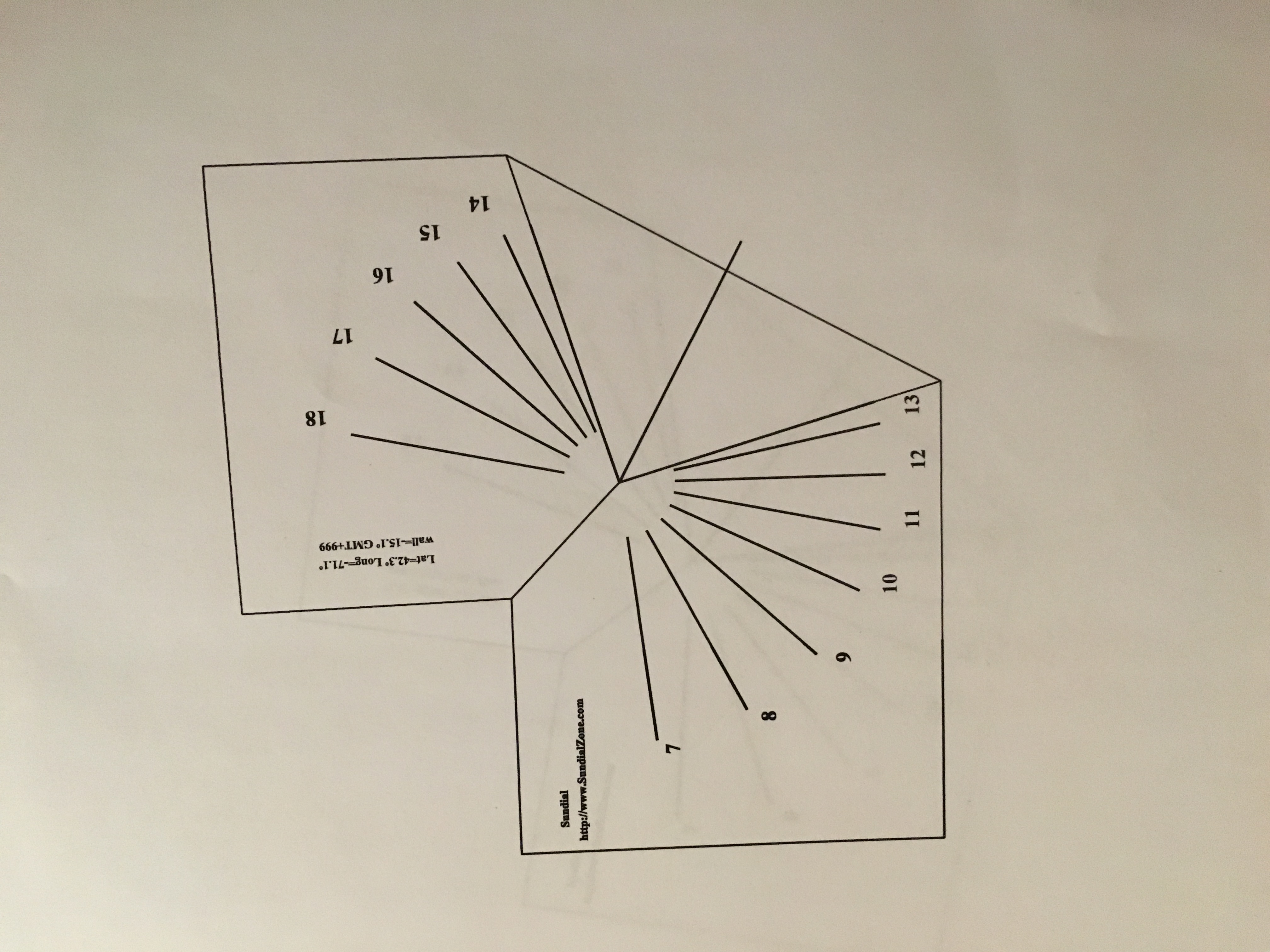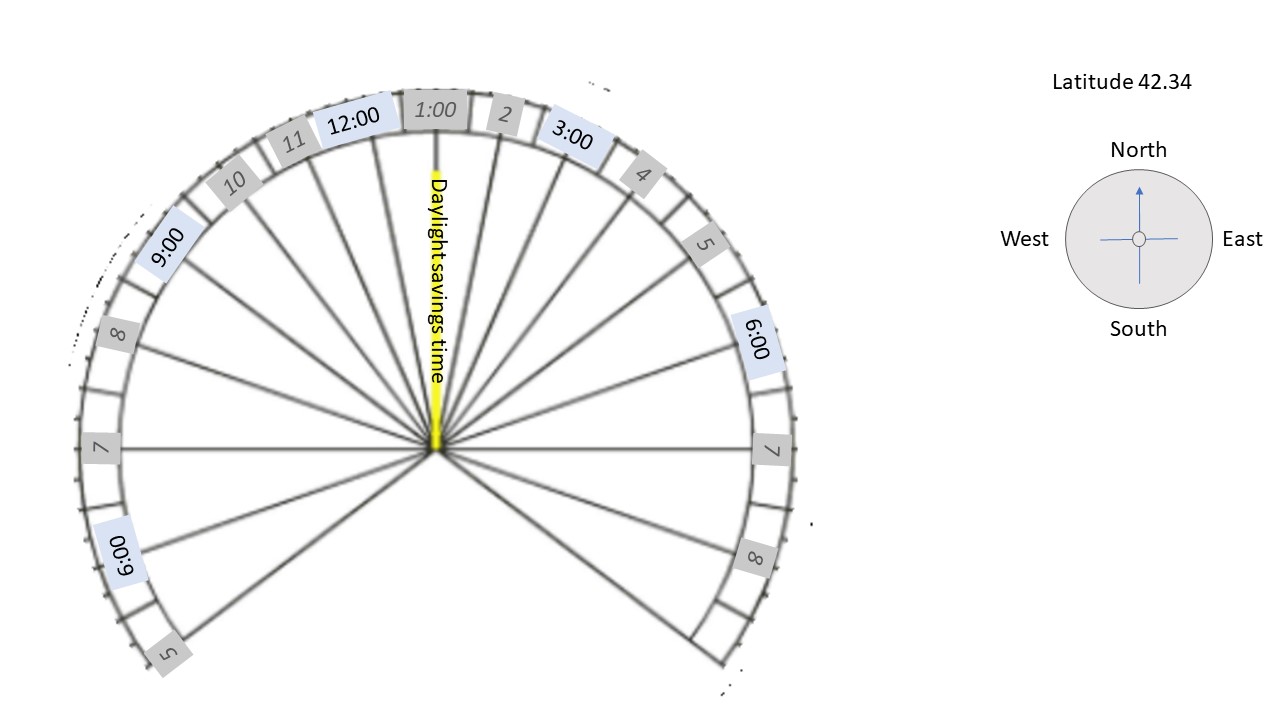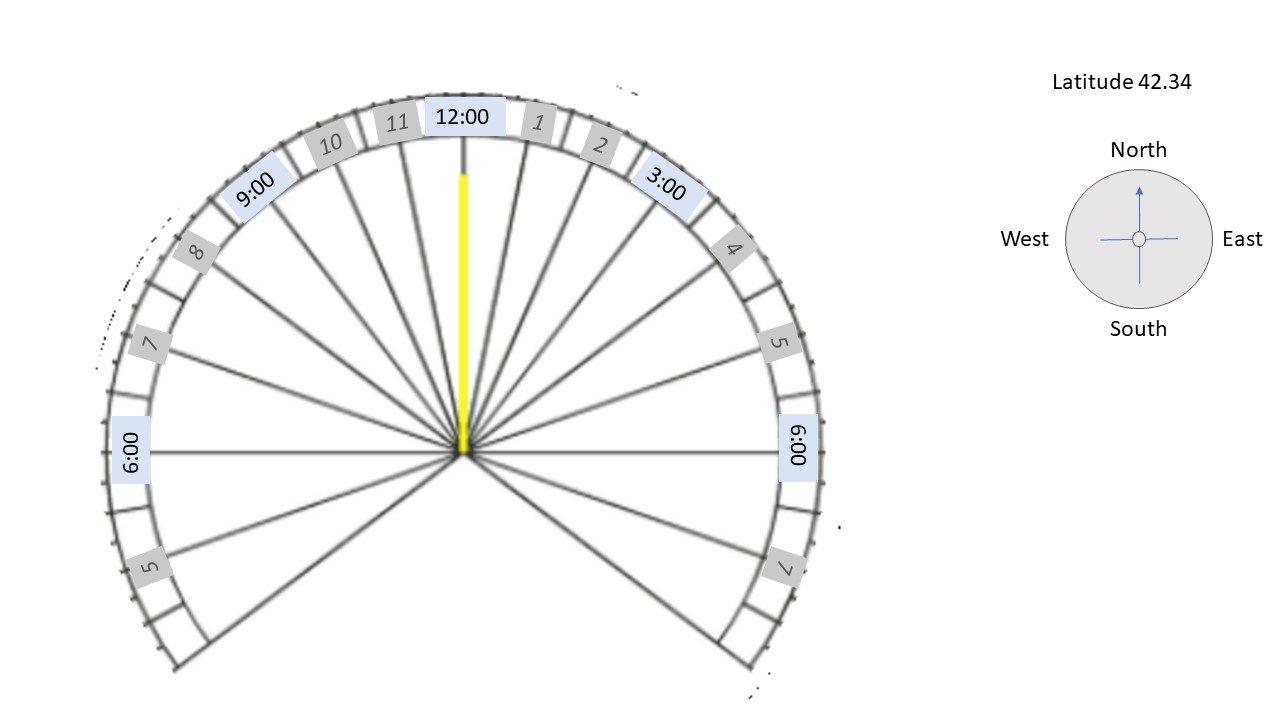Basics
- Project TitleSundials
- Submitted By (Teacher Name)Jennifer Leonard
- SchoolThe Skills Library / For Science Wednesdays
- ThemeCreating sundials; also creating models to illustrate the motion of the earth around the sun.
- Grade LevelElementary and middle school
- Materials / ResourcesGlobe
Flashlight
Scissors, paper, colored pencils, tape, sticks
(optional) Durable materials such as wood for creating a garden sundial - Duration of lesson3 after school sessions
- Key Vocabulary / Word Walllatitude
longitude
compass points
rotation
revolution - Pre-Requisite KnowledgeMost of the students are familiar with the motion of the earth and sun but appreciate a review so that they can better visualize how and why shadows change during the day. Our group is a multi-age group and so students will have different levels of understanding about why sunrise, sunset and the path of the sun varies by latitude, by season, and with daylight savings time.
Recommended Strategies / Instructional Techniques
- Family: Any opportunities to involve parent/guardians and other family members in this project?bb
- Virtual/Remote Teaching Strategy-
Detailed Outline
- Opening Discussion: Telling time with the sunOpening discussion about how the sun appears to move through the sky from sunrise to sunset. Using simple props such as a flashlight and a globe or ball, students model the motion of the sun and earth and look at how shadows change during the day and evening.
- Opening Discussion: History of time-tellingWhen where clocks invented?
What methods would people have used before clocks?
Describe a simple method of estimating the time based on its position in the sky. (See activity sheet)
Introduce the concept of sundials. -
Web Link: The British Sundial Society
- Project #1: Simple sundial Create a simple sundial with sticks, stickers or other materials
-

- Project #2: Sundial templateChoose an outdoor wall for a sundial and determine the exact orientation of the wall, as well as the exact latitude and longitude of your location. Use the template to print out a sundial for your longitude and latitude and hang it on a wall outdoors.
We use the Sundial Zone website (https://www.sundialzone.com/en/sundial.php) for the template. This page provides a latitude and longitude finder. We also have our own on the skillslibrary.com/sciencewednesday page that will find the position where you are currently standing, regardless of street address. We can also use latlong.net for latitudes and longitudes. A smartphone compass or hand compass can find the declination (North, East, South, West) of the wall. -

Web Link: Sundial:Do it yourself
Web Link: Latitude and Longitude finder
Web Link: Science Wednesday Page - Look for the Latitude/Longitude finder
- Project #3: Horizontal sundialUse a template to create a horizontal sundial to keep in a garden.
-


- Wrap-up DiscussionIn a wrap-up discussion, talk about the ingenuity of the people who have designed sundials and look at photos of antique and contemporary sundials.
Introduce the idea that the position of the stars can also be used to figure out the time of night. The Big Dipper constellation is one of the best time-keepers, as it points to the North Star and appears to rotate around the North Star almost like the hands of a clock. -

Tags = Science-Wednesdays | sundials | Subject = Science | Grade Level = Elem, MS | Time Period = After-School Prog | Program/Funding = | NONE |
Direct website link to this project: http://ContextualLearningPortal.org/contextual.asp?projectnumber=761.1442


